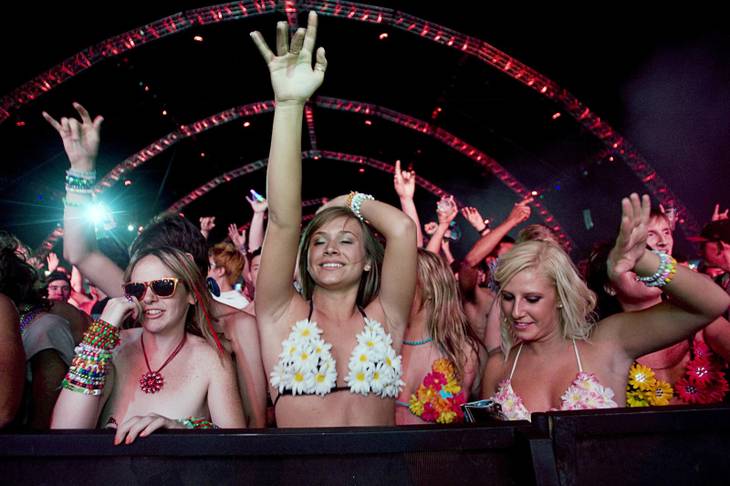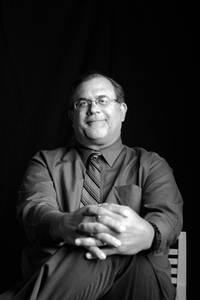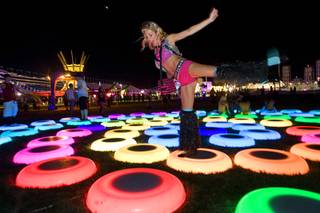VEGAS INC coverage
Related Content
The Las Vegas Convention and Visitors Authority prides itself on being research driven, knowing the habits of tourists and business travelers who spend money when they come to Southern Nevada for business or pleasure.
But the LVCVA has little information on fans of the Electric Daisy Carnival, the electronic music festival that in the two years since moving to Las Vegas has become one of the largest and most successful special events on the local calendar.
Last week, Insomniac Inc., the organization that sponsors the EDC, announced that this year’s event is a sellout.
Insomniac was told to cap ticket sales at 115,000 a night, meaning the turnstiles will turn 345,000 times this weekend at Las Vegas Motor Speedway.
How many of those coming for the dusk-to-dawn festival will attend all three nights? There’s no data, but Insomniac believes most will attend every night of the event.
How much money will they spend? There are a couple of educated guesses based on a survey Insomniac commissioned last year and on estimates offered by experts at Las Vegas-based Applied Analysis, but that is unclear as well.
Many tourism leaders have publicly embraced the EDC, but others still don’t know what to make of the predominantly California crowd that shows up in vibrantly colored, flamboyant costumes.
Insomniac’s economic impact study, published in November and authored by Beacon Economics LLC, Los Angeles, estimated that based on an average attendance of 83,000 a night, EDC 2011 resulted in an economic impact of $136.4 million on the local economy. The report broke that down to $4.6 million from local attendees, $108.5 million from out-of-town fans and $23.3 million by Insomniac itself.
According to Insomniac, the event supported 1,400 jobs in the Clark County economy.
Based on an online survey of more than 12,000 people who attended the event, the report concluded that local EDC fans spent $249 and non-locals spent $311. That’s a pretty big difference from the metrics calculated for typical Las Vegas visitors. Alyson Bettelman, a senior manager for Applied Analysis, said the average Las Vegas tourist spends between $600 and $700.
Why the big difference? In part, it’s because that $600 to $700 budget includes spending for gaming. Many in the EDC crowd can’t gamble legally because they haven’t reached their 21st birthdays.
Bettelman ran this year’s estimated attendance figures through the Applied Analysis tourist spending formula and came up with a suspected economic impact of about $130 million for a 115,000-a-night sellout. That, they say, supports 700 jobs.
Privately, some local tourism officials believe the Insomniac-Beacon Economics numbers are slightly inflated to curry community support for the event.
An interesting observation from one of the owners of a taxi company is that the EDC crowd is similar to the casino nightclub crowd. That’s good, Applied Analysis principal Jeremy Aguero says, because nightclubs are the second-biggest profit centers in resorts behind the casinos — more than restaurants, retail and entertainment. Aguero said he’d like to have a crack at learning more about the EDC demographic and conduct a few exit interviews to develop a more accurate portrait of those who attend.
In the meantime, resort properties are seeing dollar signs for EDC weekend stays. There’s a lot of money coming to the city and resort operators jack up room rates to whatever the market will bear.
Using VEGAS.com (the Sun and VEGAS INC are sister companies of VEGAS.com), I compared rates for the EDC weekend against rates for the weekend afterward. A handful of properties had triple-digit percentage differences, including the Riviera (a 151.5 percent difference with rooms going for a minimum of an average $254 for EDC weekend); Sam’s Town (150 percent to an average rate of $200 a night); Stratosphere (115.4 percent to $224 a night) and Luxor (110.8 percent to $272 a night.)
Wynn Resorts, which last year gouged EDC fans the most of any Las Vegas resort, showed restraint this year by increasing rates 11.1 percent to $499. That’s a reflection of Wynn’s bid to maintain high average daily room rates on a regular basis.
As long as the Electric Daisy Carnival plans to make Las Vegas its summer home, it’s time we learn more about who they are and what they spend. If we do this right, the EDC fans of today will become the regular Vegas leisure visitors of tomorrow.


